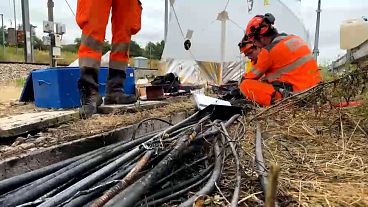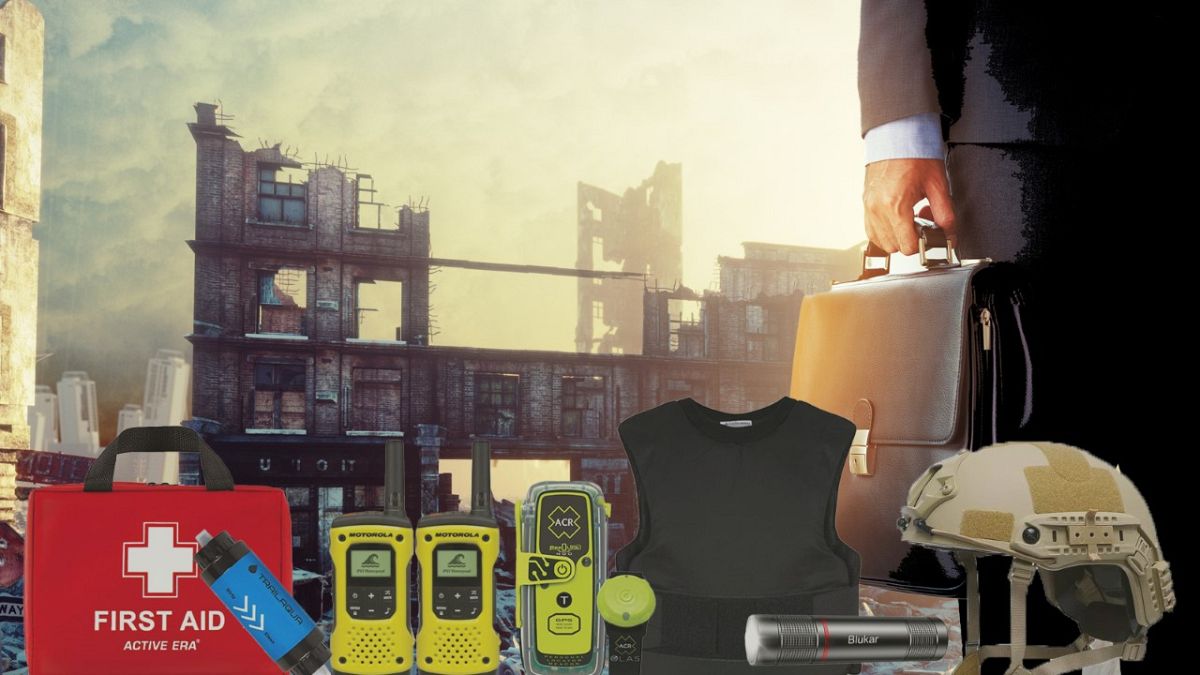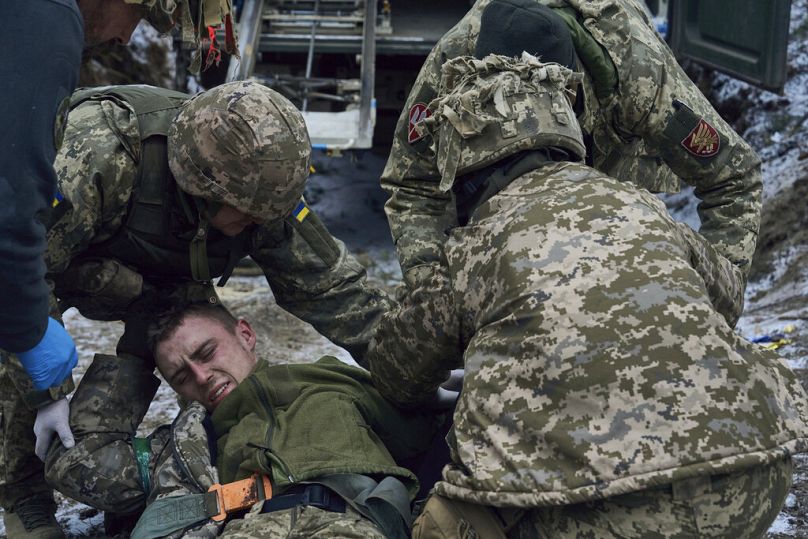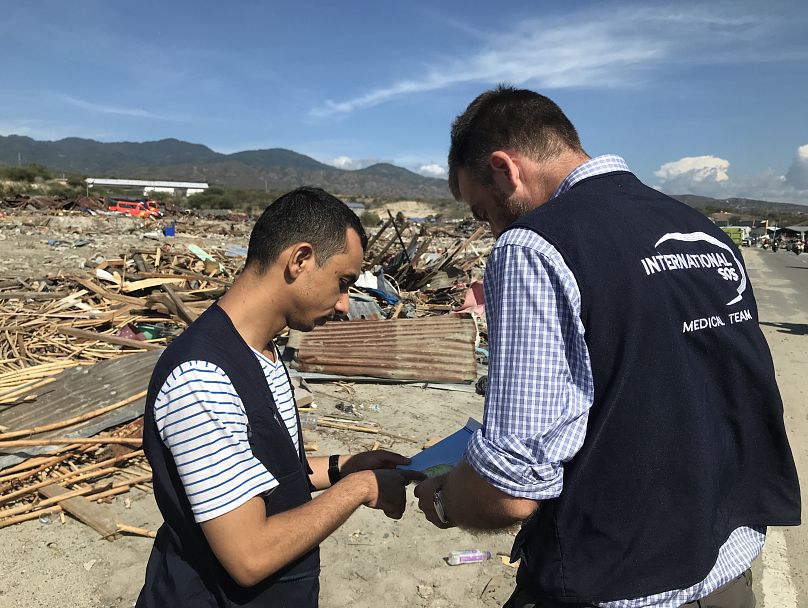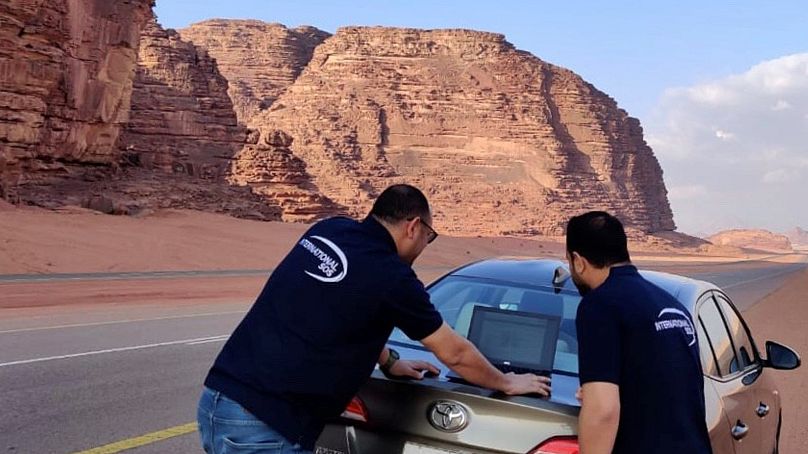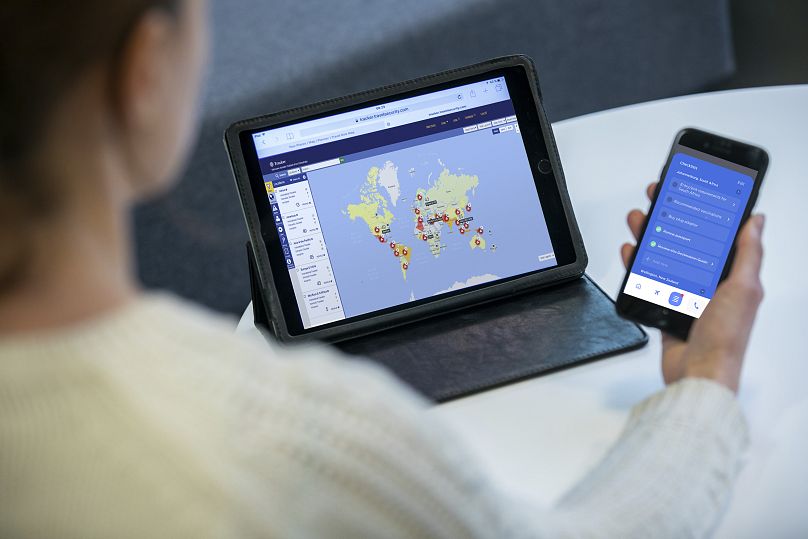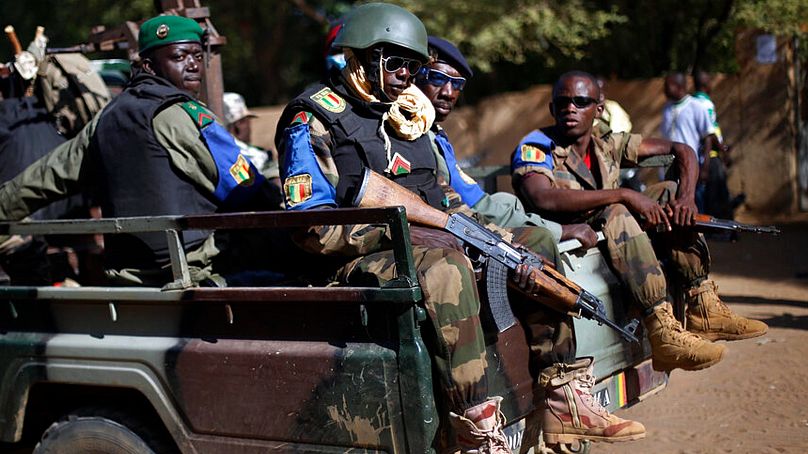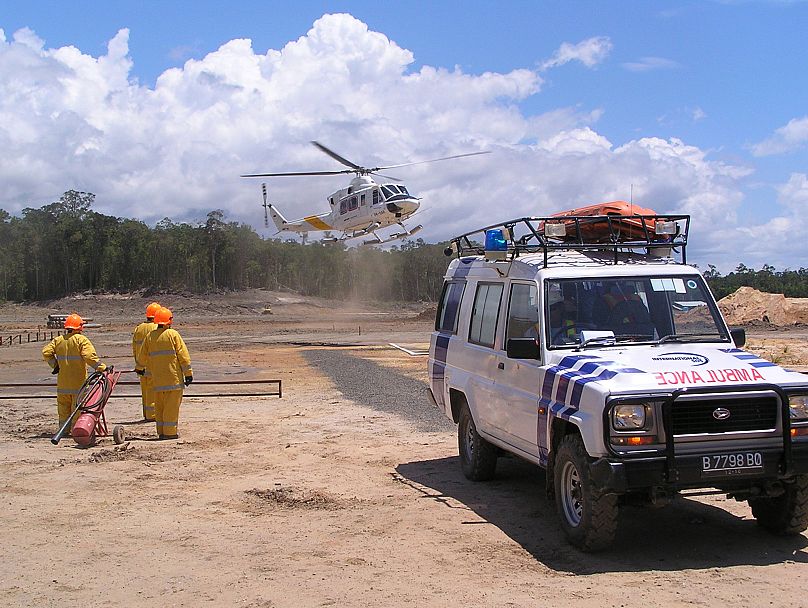As an EU delegation makes its way to Ukraine, security experts say a 'holistic, agnostic and horizontal' approach can reduce life-threatening risks in a conflict zone.
As a delegation of EU commissioners travels to Kyiv for the first EU-Ukraine summit of 2023, security experts gave Euronews some insight on how to maximise their safety.
Moving a group of diplomats to a war zone is an art that entails as much tedious office research as primordial survival instincts.
In a situation where not everything can be controlled all of the time, it is better to have a few different plans of action.
"Don't bind yourself to only one plan", Gautier Porot, EMEA crisis director at International SOS, told Euronews.
"For evacuations, for example, we always consider three options: Road, air and sea routes. You should always have a holistic and agnostic approach, to be ready to adapt as you travel".
No such thing as a 'perfect plan'
Going to war zones however remains a dangerous business, "there's no real way of making it safe", says former BBC Gaza and Iraq reporter James Rodgers.
"Somewhere which is safe one week may be completely dangerous a couple of weeks later."
Preparation is key: How does it work and how long it takes?
According to International SOS, 70% of a mission's success depends on its preparation. It's a phase that can take up to three weeks and is also an internationally codified procedure, the ISO 31030:2021.
The first phase consists of analysing medical and security needs. "We want to understand risks, possible unknowns as well as potential developments of a situation. We also analyse the location and its population," explained Gautier Porot.
The next step is laying out a comprehensive plan to mitigate the risks identified in the previous phase.
"Now you need to identify local resilience services, safe housing, valuable medical facilities and reliable transportation, which can range from a simple meet and greet at the airport with an identified driver to a convoy with armed personnel," Porot said.
Training the travellers is also a crucial step. According to International SOS, it usually takes a couple of days.
The most common procedure is the Hostile Environment Awareness Training (HEAT), which includes situational awareness, first aid and emergency response procedures.
Some organisations also help their clients to better "know themselves" by building a traveller profile.
Bombings, invasions and and hurricanes: What to do if things go wrong
Defining the danger level in a particular situation is never straightforward, but an "escalation matrix" is a useful tool to quantify the risk, says International SOS.
In case of a suspected incident, they activate a geofencing system that locates the victims by creating a virtual geographical boundary that triggers a proactive response involving both logistical and informative aspects, like push alerts.
Finding a safe place however remains paramount.
"Not long ago, one of our clients in Mali came under bombing. We told him to find a safe place and lock or barricade doors. Then to turn off the lights and stay as quiet as possible so as not to attract attention. Then to communicate his status and wait for the nearest response-team to pick him up and return him to his hotel safely. We'll always have a crisis management team in the nearest centre to the incident location".
The worst possible scenario is "no comms", says Gautier Porot, which is usually the case with natural disasters.
In order to mitigate the risk, a safe and reachable gathering point should be identified beforehand.
It also helps to carry additional communication tools like a personal locator beacon, satellite phones and two-way radios.
Learn how to 'read' the territory
"If you see an empty street you might think that's a very nice, calm place to go down", says James Rodgers, "but most military experts would probably tell you, if it's in a war-zone, that the opposite is true. The reason why the street is empty is because is known to be a dangerous place".
Knowing a certain territory however is as important as understanding its culture, he adds.
"We were going to film the place where Saddam had been captured, in an area which was very loyal to him. It wasn't really safe for us to stop on the road to, you know, ask for directions or anything like that. The population was largely hostile to people like me who came from a country, the UK, which was involved in the invasion. You really need to bear in mind the political situation".
After the trip: Mental health risks
Protecting travellers after a risky mission should not finish at the end of the assignment.
Some travellers can develop a form of PTSD. They may have been stressed or traumatised, so it's important to do a de-brief and discuss each individual experience.
"The key thing here is to make sure that your collaborators know there is a support program and that it's okay not to be okay", says Gautier Porot.
"I know quite a lot of people who worked in war zones and some of whom have definitely suffered from post-traumatic stress disorder", says James Rodgers. "Sometimes, perhaps more shockingly and more surprisingly, in some years afterwards."
"Professor Anthony Feinstein published a big study into this when he talked to people who've been working in conflict zones in the 1990 and early 2000. He discovered that the effects on journalist’s mental health were similar to those experienced by civilians in war zones."

